Gain insight on the advantages of using hinged knee braced to allow for better knee stability and brace use during recovery and everyday activities.
What is a Hinged Knee Brace?
Hinged knee braces are designed to safeguard an individual’s knee joint. These supports are beneficial to a wide range of people including athletes and those recovering from an injury. This guide discusses what a hinged knee brace is along with their advantages, instructions on how to select the proper one, and more.
Like all knee braces, hinged knee braces serve the only purpose of offering support to the knee. What separates other knee braces from hinged ones, is the equipped mechanical hinges which enable range of motion while restricting harmful twisting or bending. Athletes and post knee surgery patients would benefit the most to this feature. During rehabilitation or when extra support is needed, hinged knee braces provide freedom of movement while ensuring a reduced risk of injury.
The design of a hinged knee brace incorporates a few major features. These features generally include the two hinges positioned on either side of the knee, the tightening straps that secure the orthopedic device, soft padding placed on the interior portion for comfort, and at times, a supportive frame that offers structure and is made of either metal or plastic. Such construction provides strength and flexibility around the knee joint.
Benefits of Using a Hinged Knee Brace
Regarding hinged knee braces, one might have several thoughts worth discussing. Perhaps the most notable feature of these types of braces is that they improve the stability of the knee joint. This is important for safeguarding injuries and would be helpful for individuals who engage in high-impact sports that stress the knee joints. With increased stability, individuals are able to move more actively without the concern of their knees buckling beneath them. Sportsmen and women often discover that the best knee braces for athletes give them additional confidence while improving their sporting performance.
Improved mobility is another important advantage. A good hinged knee brace does not restrict motion; rather, it enables one to bend and straighten the knee flexibly within certain limits. This ability to move is important for maintaining level of daily activities or returning to sports after a period of absence.
Furthermore, knee hinged braces have a very important role in both prevention and rehabilitation of knee injuries. As the knee joint is supported, they are helpful for the ones recovering from injuries and surgeries. Often, doctors recommend post-surgery braces to stabilize the joint while providing some degree of support and thus protect it. Those who wear these braces during recovery usually report decreased discomfort and a faster return to full activity.
Types of Hinged Knee Braces
With regard to protecting the knee, there are also different categories of hinged knee braces. Rigid hinged knee braces are often prescribed because they are used for serious injuries or post-operatively. These types of braces are quite rigid and do not allow considerable range of motion, these offer maximum support and protection to the knee. These braces are critical for those recovering from significant injuries and require surgical stabilization of the knee.
As noted earlier, customized hinged knee braces work best during physical activities since users are able to control the amount of support they require. This type of brace is best suited for multi-sport athletes as it provides variable levels of support and adapts to movement and acceleration.
There are a variety of sports braces and selecting one is dependent on personal factors like information received from medical professionals, specific activities planned, and chosen recreational options.
What physical activities do you wish to engage in? This is the first question that comes to mind and the answer will determine what type of knee brace, if any at all, should be worn. Fitting is a primary concern when it comes to knee support. Like many other rehabilitative or assistive devices, a knee brace which is either too large or too tight will be ineffective and an inappropriate fit. Measure your knee and check with the manufacturer’s guidelines to ensure a correct size selection.
Comprehensive Analysis of the Best 6 Hinged Knee Braces for Better Support and Rehabilitation
In-Depth Reviews of Top 6 Hinged Knee Braces for Enhanced Support and Recovery
Hinged knee braces serve an essential function for individuals dealing with knee soreness or recuperating from injuries. They effectively offer critical support and stabilize the knee while managing pain. Here’s an in-depth review of six knee braces that stand out and are bound to cater to different requirements along with important features, specifications, use cases, advantages, disadvantages, and ideal user descriptions.
1. Bodyprox Hinged Knee Brace

Key Features
The Bodyprox Hinged Knee Brace remains unparalleled when it comes to providing maximum support and stability for individuals suffering from an ACL, PCL, or MCL injury. The brace comes equipped with two removable hinges which along with the open patella design provide comfort to the knee’s back side as well as ensures it remains stable.
Specifications
Size: Medium
Material: High-grade and breathable neoprene
Uses: Supports pain arising from different conditions such as osteoarthritis and tendon injuries.
Use Cases
Best suited for athletes who are recovering from an injury and for those who need knee support in their daily routines.
Pros and Cons
Pros: Extremely adjustable with great comfort and breathability.
Cons: May be considered slightly bulky for longer wear by a minority of users.
Best For
Ideal for active individuals looking for a sturdy brace for knee support to cope with pain while exercising or during everyday activities. brace to provide robust support while participating in sports or managing knee pain in daily life.
2. NEENCA Professional Knee Brace
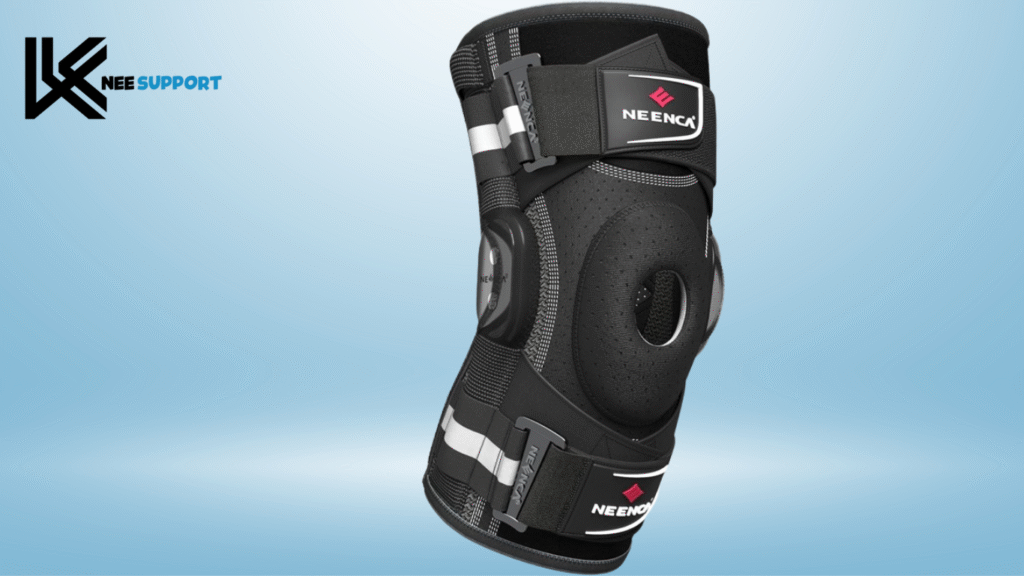
Key Features
NEENCA elegantly solves the problem of knee joint support with their patented X-Strap fixing system. The brace includes a gel pad and adjustable stabilizers for personalized fit and support.
Specifications
Size: Large
Material: Copper-infused fabric
Uses: Alleviates arthritic and joint pains, enhancing recovery. Multi-faceted pain relief.
Use Cases
Due to its design for physically demanding activities, this knee brace is ideal for patients recovering from surgery and for those living with chronic knee pain.
Pros and Cons
Pros: Endorsed by healthcare professionals. Highly adjustable and well ventilated.
Cons: The large size may not be compatible with slenderer leg profiles.
Best For
Sports enthusiasts and rehab therapy patients requiring sturdy knee support will find this product most useful.
3. ATHLEDICT Hinged Knee Brace
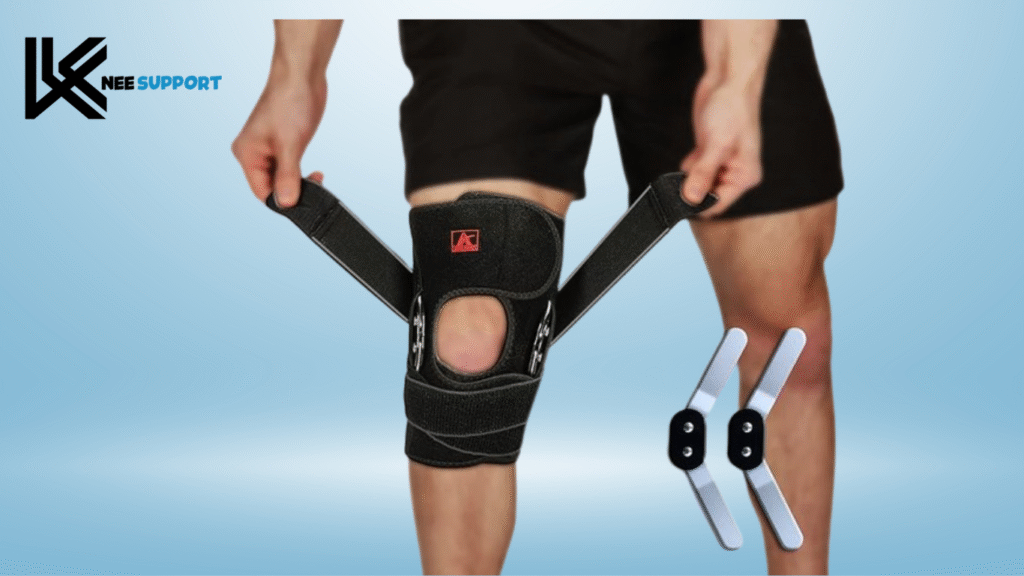
Key Features
ATHLEDICT’s brace distinguishes itself by including a lifetime warranty and features such as a reversible design which prevents pinching behind the knee. It is highly adjustable with respect to brace tightness and level of support.
Specifications
Size: Medium
Material: Durable fabric with adjustable straps
Uses: Applicable ACL and meniscus tears and other knee injuries.Use Cases
Ideal for athletes, especially during intensive training, and also suitable for post-surgery recovery.
Pros and Cons
Pros: Provides standout comfort for extended periods of use due to effortless adjustability.
Cons: During rigorous activities, some users may experience difficulty with frequent adjustments.
Best For
Great for those who are physically active and need comfort and flexibility for sports or during recovery.
4. SHENGYADE Adjustable Hinged Knee Brace
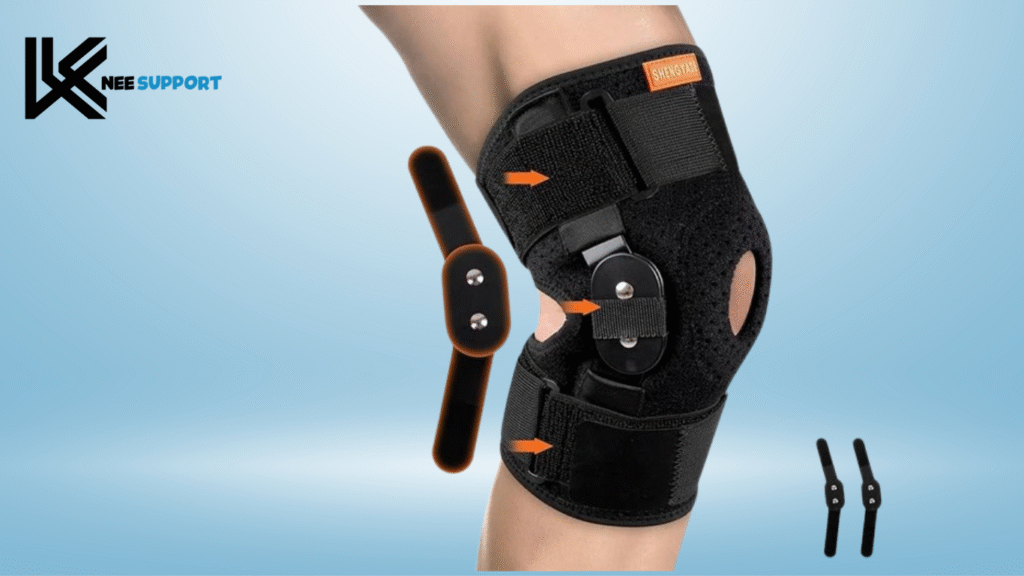
Key Features
This lightweight knee brace is fully adjustable and provides premier support for the knee joint’s various functions. It includes an adjustable gel pad for optimal fitting and compression.
Specifications
Size: Medium
Material: Light, yet strong fabric
Uses: Supports ACL/MCL injuries and provides general knee support and pain alleviation.
Use Cases
Ideal for individuals participating in dynamic sports or require support during mobility throughout daily tasks.
Pros and Cons
Pros: Easy to don and doff, and wears well for daily use.
Cons: May feel quite loose after extended wear.
Best For
Ideal for active individuals who need reliable knee support while engaging in activities.
5. Comforband Adjustable Hinged Knee Brace
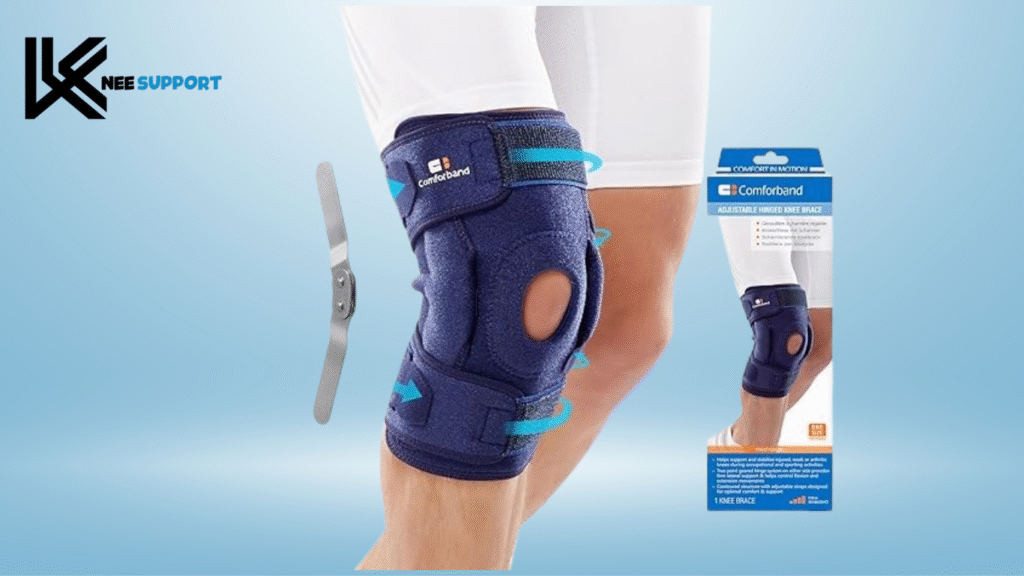
Key Features
The Comforband brace’s unique four-strap design maximizes stabilization while its therapeutic neoprene material reduces swelling.
Specifications
Brace Size: One Size
Material: Premium neoprene
Uses: It assists several knee injuries, including recovery from surgeries.
Use Cases
This brace provides the needed support and stabilization for both the athletic and everyday active person.
Pros and Cons
Pros: Comprehensive pain relief and stabilization, customizable fit.
Cons: Bulkiness for some users.
Best For
Knee surgery rehabilitation and chronic knee problems.
6. McDavid Heavy Duty Hinged Knee Brace
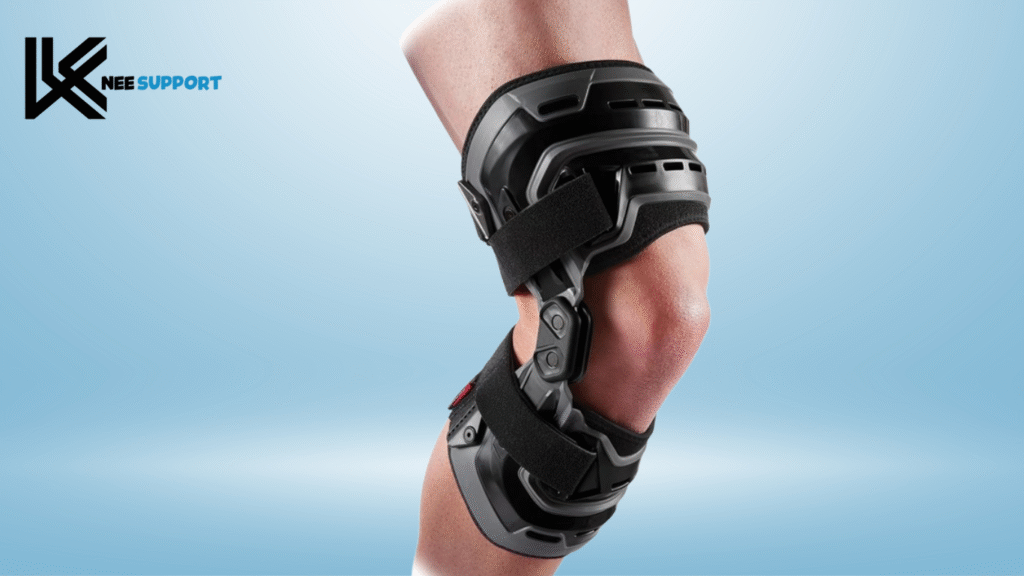
Key Features
The McDavid brace features bi-lateral aluminum hinges and a compression sleeve, providing flexibility alongside serious support for kneecap pain relief.
Specifications
Size: X-Small
Material: Combination of rigid and soft materials
Uses: Provides meniscus tear support along with comprehensive assistance for pain and injuries.
Use Cases
Perfect for high-impact sports and anyone requiring reliable knee protection.
Pros and Cons
Pros: Outstanding comfort and adjustability.
Cons: Small size may restrict its use for larger bodied individuals.
Best For
Ideal for those needing rigorous assistance for recovery or preventative support for the knees during physical exercise. als who need heavy-duty support for knee recovery or prevention during sports.
How To Choose The Right Hinged Knee Brace
Material is another important factor. Braces constructed with lighter and more durable fabrics provide a balance between comfort and longevity. You want a brace that will endure the rigors of time, but also feel good on your skin, particularly if you intend to wear this for a long time.
It is prudent to speak to some clinicians. They would know best regarding your knee problem and propose certain braces that are likely to match your requirements. In fact, they could suggest the most suitable orthopedics for your knee complications that are particular to your case.
How to Properly Wear a Hinged Knee Brace
A hinged knee brace should be worn correctly, and begins with ensuring that the brace is placed in such a way that the hinges are on the medial and lateral sides of your knee joint. This will ensure optimal functioning of the brace. After positioning the brace, secure it with adjustment straps ensuring it is snug but not too tight. You should be able to move your toes with ease. Any brace that is too snug can result in discomfort as well as restrict blood flow.
If the brace is being worn to aid recovery, then brace use should be maintained during any movements that involve bending the knees. During rest periods, the brace should be removed. Following this approach ensures that the brace is able to provide optimal benefits while allowing some passive recovery periods muscle and joint stress.
Common Misconceptions About Hinged Knee Braces
Who ought to wear a knee brace is an area of confusion for most people. hinged knee braces are not exclusively for severe athletes or greatly injured individuals, instead a wide variety of people can benefit from them. Those who experience knee pain, instability, or are in the recovery phase of an injury can take advantage of a hinged knee brace. They provide stabilizing knee support which is beneficial to many individuals irrespective of the activity level.
The misconception that hinged knee braces limit movement is quite common. In truth, a movable hinged knee brace that is properly fitted improves movement while providing support. They aid users to walk, run, or do sports with more ease and confidence. If loss of mobility is the concern, there is no need for worry, as hinges are ergonomically designed to allow proper knee movements while protecting the joint from injury.
Real User Experiences and Testimonials
Numerous individuals have reported that hinged knee braces have and continue to transform their day to day activities. For example, athletes talk about how they can now comfortably engage in their sports activities without the risk of getting injured. There are also testimonials of people returning to athletics after surgeries or major injuries and attributing their hinged knee braces for their regained confidence and performance capability.
Reports highlighted better comfort and less discomfort while moving around for the majority of the users. In addition, there was less mobility support required for the individuals who used well-fitting braces during the day. Reviews emphasize that the brace must fit well, as this significantly affects the support one receives throughout the day
Caring for Your Hinged Knee Brace
Maintaining your hinged knee brace is crucial for all knee braces in order to maintain their functionality. Keeping proper hygiene ensures that all sweat and dirt that can ruin the materials are removed. Following the manufacturer’s care guidelines is crucial since each base is different, and with one incorrect step, you can easily damage the brace while trying to make it clean.
Equally crucial is evaluating your orthopedic brace on a consistent basis. Look for visible damage such as worn-out straps or broken hinges. These may signify that your knee brace is due for replacement. Wearing an orthopedic brace that is damaged may compromise its support and lead to further injuries.
Alternatives to Hinged Knee Braces
Hinged knee braces are not the only form of knee support available on the market as they positioned themselves as one of the most effective types of knee braces. Sleeves/supports provide a lesser level of support relative to hinged braces. They provide compression and warmth, and can assist in alleviating minor discomfort or swelling.
For some people, supportive movements and physical therapy may help alleviate knee pain or develop the surrounding musculature. These methods, used alone or with a knee brace, can promote a holistic approach to managing knee health.
Frequently Asked Questions
One of the most common questions asked is how does one determines if a knee brace is necessary?
For individuals who experience chronic pain or instability in their knee, it is advisable seeking professional help to evaluate if a knee brace is appropriate.
Some people may want to know if it is possible to wear a knee brace all day?
In most cases, it is fine to wear a knee brace during your usual activities so long as it feels comfortable and does not hurt in any way.
Many prospective patients wonder about the distinction between knee sleeves and knee braces?
bracing offers more stabilizing support than knee sleeves; the latter focuses more on compression and warmth.
Moreover, it is safe to suggest that hinged knee braces have become important for different populations such as sports persons and injury rehabilitees. It gives the much needed support while encouraging mobility which is also vital. Adequate understanding of hinged knee braces and proper selection will promote optimal knee health. The right information and products will facilitate greater activity with minimum pain.
